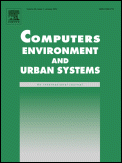
A pedestrian trip is a spatiotemporal process going through different states and related to different decisions made at certain times and locations on the urban network. The analysis of pedestrian trips in terms of crossing patterns is a complex task, which is often further limited by a lack of appropriate and detailed data. The objective of this research is the development and testing of appropriate indicators of pedestrian crossing behavior along urban trips, and a methodology for collecting and processing the data required for the analysis of this behavior. First, a comprehensive set of indicators for the assessment of pedestrian behavior in urban areas is proposed (i.e. average trip length, number, type and location of crossings). Then, a GIS tool is developed for the storage and integration of information on pedestrian trips, and the crossings made during the trips, with other geographical information (e.g. road network function and geometry, traffic control and pedestrian facilities). The proposed approach is then tested at network level on a sample of pedestrian trips collected by a field survey. The results suggest specific patterns of pedestrian crossing behavior, such as the tendency to cross at the beginning of the trip and the tendency to cross at mid-block locations when signalized junctions are not available. The results are further discussed in terms of urban planning and management implications. It is concluded that the proposed approach is very efficient for the analysis of pedestrian crossing behavior in urban areas.
| ID | pj57 |
| Manuscript | |
| DOI | |
| Tags | pedestrians |






